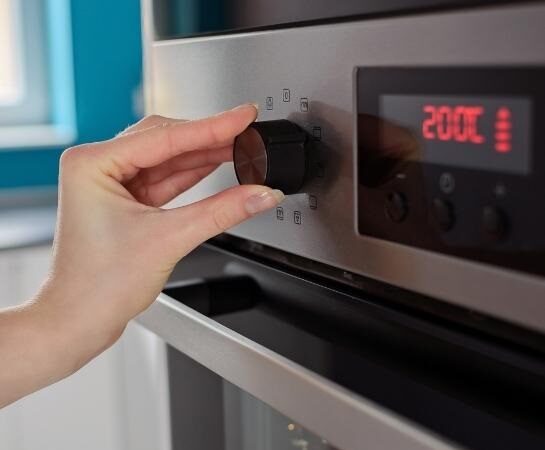Topsoil Tips for Spring

Introduction
Whether you want to grow highly nutritious fruits and vegetables or a beautiful garden, you need good-quality topsoil that is suitable for the plants. Unfortunately, the extreme temperatures of the winter can not only harm your plants but also leave the topsoil in your garden in worse condition. When that happens, it is best to search for “topsoil near me” online and order a fresh batch of suitable topsoil for your garden.
Tips & Tricks
Here are a few topsoil tips for spring you can follow:
- Check the condition of the existing topsoil – It is important to check the condition of your topsoil in order to determine what you need to do to restore it to a good condition. Sometimes, the soil can become too compact if left undisturbed for a long time and it can prevent the smooth flow of nutrients and water.
A simple method to fix it is to aerate the soil by digging small holes in the ground. However, ensure that you avoid digging holes over certain spots such as sections that contain plant roots and shrubs so that you don’t harm them in the process.
If the topsoil in your garden is fairly new, there is no need to apply a fresh batch of topsoil. You can simply apply a fresh coat of topsoil of the existing type over certain sections that are in the worst condition.
- Remove weeds – As the weather starts to warm up, it can trigger the growth of annual weeds which can compete with the plants you want to grow for spring and such away all the water and nutrients. Thus, it is essential to remove any weeds you spot when making new garden beds, adding organic matter, creating raised beds, and more.
You can remove weeds by hand, but it can be a pretty tiresome process. The simplest way to do it is to warm up the soil by adding layers of clear plastic sheets and then pulling the weed seedling that has started to grow by hand. However, you might need to use a weedkiller to remove some tough variants of weeds.
- Consider adding a fresh batch of topsoil – Over time, the topsoil in your garden can deteriorate in quality if it is not cared properly maintained or becomes subject to harsh weather and pollution.
For instance, if you notice a lot of contaminants in the topsoil such as glass, building material residue, rocks and debris, waste materials, and more, it can become much more challenging to fix it. Thus, if the topsoil in your garden is too old, it makes sense to check its quality in order to determine whether you need to order a fresh batch that is free of weeds and contaminants.
However, before you order a fresh batch of topsoil, it is important to determine the type of topsoil you have in your garden since it can help you learn the type of plants you can grow in your garden. Generally, good-quality topsoil will have a balanced combination of sand, silt, and clay. Here is a list of common soil types:
- Clay soil – Such soil is lumpy, smooth, heavy, sticky, and can be easily rolled into the shape of a ball when wet since they contain at least 25% clay. However, it sets like concrete when it becomes dry.
- Silty soil – Such soil has a silky and soapy feel since they contain fine grains. They can be squeezed into a small sausage but not a ball and can be compacted easily but suffer from poor drainage.
- Sandy soil – Such soil won’t stick together to form a ball since they consist of lots of sand particles that feel dry and gritty. Sandy soils drain water quickly since they have a high concentration of sand.
- Chalky soil – Chalky soil has a high lime content that makes it alkaline. It looks pale and is harder to dig than other soil types since it is full of lumps of chalk and stones.
- Loamy soil – Loamy soil is a combination of 20% clay, 40% silt, and 40% sand and is considered the ideal soil type by gardeners since they are not too sticky or dry. They are high in nutrients, offer good drainage while retaining sufficient moisture, and are easy to cultivate.
- Check the soil pH level – It is important to check the pH level of your topsoil since different plants thrive at different pH levels. Generally, a pH of 7 is considered neutral which is neither too acidic nor too alkaline.
You can easily test the pH level of the soil in your gardening using a DIY kit that is easily available at any garden center. High-quality topsoil often has a pH level of between 5.0 and 8.2
- Improve solid nutrition – It is always recommended that you improve the quality of your soil no matter its type. The best way to do so is to add organic matter since it not only improves the nutrient content of your soil but also makes the soil easier to dig, loosens tight clay, and helps sand hold more water.
A few common types of organic matter include:
- Composted manure – It is recommended that you add 30 to 40 pounds of composted manure for every 100 square feet.
- Plant materials – During the winter, add plant materials such as grass clipping, straw, and leaves to allow them to decompose.
- Compost – These consist of decayed plant materials.You can also purchase compost from the store along with special soil conditioners, and manure.
Conclusion
Preparing the topsoil in your garden for springtime can be a challenge depending on the level of damage it has sustained in the winter and the type of fruits, vegetables, or plants you want to grow. Sometimes, all you need to do is remove some weeds, aerate the soil, add fresh mulch, and plant new seeds. However, when the condition of the soil is much worse, it makes sense to start fresh. You can order high-quality topsoil by searching “topsoil near me” online and do a complete makeover of your garden.







